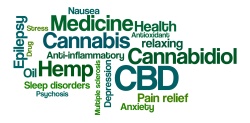
First Posted 2-11-2020; Updated 3-5-2020, 3-17-2020 and 3-20-2020
NOTE: All information on the Self Care Institute, LLC web site is for educational purposes only. No statement in, or on, this website has been evaluated by the Food and Drug Administration. We always recommend you do your own independent research before deciding for yourself to begin or implement any procedure(s) or purchase any product(s).
Disclosure: Purchasing product(s) from some of the links in, or on, this website may result in affiliate or commission compensations to Doc Kelley, The Natural Health Place or Self Care Institute.
The following information is collected from 36 years as a practicing chiropractic physician with advanced degrees in nutrition, current research and experiences gathered from helping thousands of patients.
During these troublesome times, first and foremost, Don't Panic.
Those most susceptible are generally older adults and/or someone with preexisting cardiovascular problems, diabetes, respiratory issues or obesity.
Common Sense Prevention:
1. Avoid crowds and crowded places.
2. Try to keep about six feet between you and others.
3. If you're elderly, stay home as much as possible.
4. If out and about, wash your hands with soap frequently and thoroughly for 20 to 30 seconds.
5. For overall general health and well being, incorporate as many of the following suggestions as possible.
General Dietary Recommendations

Most pathogens (bacteria, viruses, etc.), thrive in acidic environments. The Standard American Diet (SAD) is highly acid forming. It contains far too many simple sugars, simple carbohydrates (breads, pastas, etc.), trans-fat vegetable oils and processed foods. All promote acidic conditions in your body. Remove or, at the very least, significantly minimize simple sugars and simple carbohydrates. In other words, avoid, as often as possible, anything made with sugar, sugar substitutes or flour such as breads, pastas, chips, desserts, etc. Whenever possible, replace these pre-packaged, “fast” foods with more nutritious, organically grown or raised, alternatives.
Minerals are your body's answer for decreasing acidity. Leafy vegetables are best for minerals with sea vegetables, kelp, containing the highest amounts and best ratios. I often crumble dried sea vegetables such as nori, hijicki and wakame and add the powder to my home-made salad dressings or soups. Also consider blue-green algae supplements such as spirulina and chlorella.
Include more sulforaphane foods in your diet. Some of the best food choices containing the highest amounts of sulfur include arugula, bok choy, broccoli (especially sprouts), Brussels sprouts, Cabbage (red and white), cauliflower, collards, kale, mustard greens, turnip greens and watercress.
Glucosamine and methylsulfonylmethane (MSM) are useful supplements for providing extra sulfur. A typical dosage is 500 mg three times daily.
Take a look at best food choices for lots of variety. And, consider healthier eating habits for better meal scheduling ideas. Some of the best side effects of Keto diets, better food choices, intermittent fasting and vegetable smoothies (See Below) include weight loss, more energy, mental clarity and better sleep.
A great online source for Keto-friendly condiments is Primal Kitchen. For 10% off, use coupon code DOC10.
Another excellent source for healthy foods include choices like 100% Grass Fed Beef Sticks, Pasture-Raised Turkey Sticks, Grass Fed Organ Complex, Supergreens, Vitamin C Complex from Foods, Superfood Bars and much more. These links should provide you with an automatic 10% discount at checkout. If not, use SELFCARE10 (NOT case sensitive) as your discount code.
NOTE: One of the best lifestyle-changing diet programs is available online: WildFit90. My wife and I participated in this program. We, and numerous patients, completed it with amazingly beneficial results.
To reduce acidity in your body even more effectively, consider replacing one meal every day with a vegetable smoothie.
Sample Veggie Smoothie Recipe
1/2 medium cucumber, peeled and de-seeded
1 medium celery stalk
1 handful spinach
1 kale leaf
1 chard leaf or substitute any other leafy vegies you may have
1 collard leaf
1/2 medium avocado
Squeeze of lemon or lime juice
4 oz bone broth. I use and recommend Bonafide brand unless you make your own bone broth.
4 oz pure water with no chlorine or fluorine (See Below)
Optional: Add a handful of frozen berries, especially strawberries or blueberries OR 1/2 small apple. Add a handful of "sprouted" seeds and/or nuts
Blend thoroughly in a NutriBullet, VitaMix or other type of high-speed blender. I use the NutriBullet Pro. It's powerful enough for any smoothie and easier to clean.
Water

Drink, and cook with pure water containing no chlorine or fluorine. Purchase a water filter capable of removing at least these two contaminants or arrange for home delivery of pure water. There are unlimited choices for water filters for kitchen faucets, under sinks, showers, whole house, etc. We have Earth2O water delivered to our home and office.
Vitamin A (Beta carotene)
Beta carotene is one of the supplements I've found most helpful in clearing resistant coughs and congestion. Since Vitamin A is a fat-soluble vitamin, it can be stored in your body. Too much can become toxic with symptoms like nausea, dizziness, headaches, pain and even death. Getting too much from foods is extremely unlikely. The vitamin A precursor, beta carotene, does not cause the same risks. It's converted to the active form of vitamin A in your body as it's needed.
For maintenance I recommend 25,000 iu beta carotene several times a week. This should be increased to daily during cold and flu seasons or whenever exposure risk is increased. When ill, consider 25,000 iu three to four, or more, times daily. After recovery, reduce to maintenance dosage.
Some of the best food choices for vitamin A and Beta carotene include sweet potatoes, carrots, tuna, butternut squash, spinach, lettuce, red bell peppers and broccoli.
Vitamin C (Buffered and Liposomal)
More vitamin C is needed for injuries and with increased exposure to illnesses. Since individual requirements for daily vitamin C can vary greatly, try the following method to find your maximum tolerated dosage. Begin with about 500 mg for every fifty pounds of body weight. For example, if you weigh 150 pounds, you might begin with three doses of 500 mg each spread throughout the day e.g. take 500 mg with each meal. If you need four doses, add one at bed time. If necessary, continue adding 500 mg doses at different times during the day until you find your optimal daily amount. If you’re exposed to an illness, add extra doses until your bowels become looser. Then, delete one or more doses until you resume normal daily bowel movements. After recovery, reduce to a maintenance dosage of about 500 mg per fifty pounds of body weight.
If you’re not already taking a vitamin C supplement, either purchase a food based vitamin C like Essential C Complex or a buffered vitamin C complex or make your own liposomal vitamin C (absorbed best). Click this Link for excellent directions for making liposomal vitamin C. Always use sodium ascorbate instead of ascorbic acid when making this recipe. It’s much less acidic.
Some of the best food sources include organically certified bell peppers, broccoli, kale, snow peas and strawberries. Yes, fresh, organic fruits, especially citrus, are a good source of vitamin C. However, eating too many and/or concentrating them into fruit smoothies can result in overloading your body with fructose (fruit sugars).
NOTE: Alpha-lipoic acid helps prevent cell damage and restore vitamin C levels in your body. It also helps break down carbohydrates and make energy. Some of the best food sources are broccoli, kidney, liver, potatoes, spinach and yeast.
Melatonin
Together, melatonin, nitric oxide (naturally increased with exercise) and vitamin C may enhance resistance to colds and flu and improve sleep quality. If you have NO major health challenges, a good maintenance dosage for melatonin would be 0.2 to 0.5 mg per day. It's best taken at night about an hour or two before bed and several hours after your last meal which is best consumed before dark. If you have mild or no illness symptoms, 3 to 5 mg daily should help greatly with sleep. If you are older and/or ill, you may benefit from as much as 50 mg daily. Divide higher doses into daytime and nighttime e.g. Daytime: 20 mg divided into small equal portions every two hours and Nighttime: 15 mg two to three hours after dinner and at or before 10 pm. After recovery, reduce to maintenance dosage.
NOTE: Taking higher doses of melatonin works best with extra vitamin C (See Above).
NOTE: If you are diabetic, or have insulin resistance, do not take melatonin before 3 pm. Melatonin may suppress insulin.
NOTE: If you are taking ACE inhibitors, have cardiac conditions or hypertension, consult your physician before taking high doses of melatonin. Melatonin may lower blood pressure and cause hypotension at higher dosages.
Vitamin E (Mixed Tocopherols)
Vitamin E is a group of eight fat-soluble vitamins. It helps prevent oxidative stress (See Antioxidants Below). Too much vitamin E from supplements can lead to excessive bleeding. Like vitamin A, it's extremely unlikely to get too much vitamin E from your diet.
The only vitamin E supplement I recommend is A. C. Grace Company's Unique E. Maintenance dosage is 1 to 2 capsule(s) daily. During times of exposure or infection, increase to three or four times daily. After recovery, reduce to maintenance dosage.
Some of the best food sources include "sprouted" nuts and seeds, avocado, asparagus, spinach, broccoli and organic oils like avocado, coconut and olive.
NOTE: Alpha-lipoic acid helps prevent cell damage and restore vitamin E levels in your body. It also helps break down carbohydrates and make energy. Some of the best food sources are broccoli, kidney, liver, potatoes, spinach and yeast.
Vitamin D3 (Cholecalciferol) - See the vitamin D article link under Resources.
According to the Mayo Clinic, vitamin D toxicity is rare. However, to make sure you’re not taking too much, test your levels with saliva or urine home test kits. Ask for the 25-hydroxy (25(OH)D)) vitamin D test. Ideally, your results should be between 60 and 70 ng/ml. Retest every three to six months to insure your levels are within this range.
Usual Vitamin D3 supplement doses are 1,000 to 5,000 IU (International Units). Higher doses may be required for protection from pathogens like bacteria and viruses. The highest dose D3 supplement I’ve found (50,000 IU) is sold by Biotech. They also have other Vitamin D3 products combined with Vitamin K2 (See Below).
If you’re in a favorable climate, 30-minutes of sun exposure, over as much of your body as possible, will give you about 20,000 IU of D3. Begin with 5 minutes daily, especially between 11 am and 1 pm, and increase gradually without burning.
Some of the best food sources include cod liver oil, mackerel, wild-caught Alaskan and sockeye salmon, sardines and tuna.
Vitamin K2 (Menaquinone-7)
Vitamin D3 works best with vitamin K2. The Vitamin K2 supplement I recommend is MegaQuinone K2-7 by Microbiome Labs. Since they only sell to licensed physicians, you'll need this code (Doc5355) to order directly. A reasonable adult dosage would be about 160 micrograms twice a day. Use more if ill or exposed to pathogens like bacteria or viruses. After recovery, reduce to a reasonable dosage.
Some of the best food sources include chicken, goose or chicken liver (pate), eggs, milk products from organically raised, free range, grass-fed, grass-finished animals (aged cheeses, cream cheese, heavy cream, sour cream, butter or ghee, etc.) and black bean natto.
Enzymes
Life happens because of enzymes. They are the construction workers of your body. Your food provides the building materials from proteins, carbohydrates, fats, vitamins and minerals. Everything happening in your body requires enzymes to work properly. Every breath you take; every move you make; every thought you think requires enzymes.
Before cooking, food enzymes are present in everything you eat. Temperatures greater than about 115 degrees Fahrenheit begin to destroy them. This is why any food, even organic, in a can should be a last choice. All the naturally occurring enzymes have been destroyed. The more food is cooked, or canned or otherwise packaged, the fewer enzymes it contains and the harder your body has to work to digest it. With time, and poor dietary choices, enzyme potential declines and immune function suffers.
This is also one of the main reasons the green drink (See Above) is so healthy. It's full of naturally occurring food enzymes which insure complete digestion without requiring your body to use its own digestive enzymes.
Consider using digestive enzyme formulas at the beginning of all cooked meals, especially during cold and flu seasons. Also, taking a high protease enzyme formula between meals (to minimize the enzymes being used for digestion of proteins) allows the extra enzymes to enter your bloodstream and assist immune function.
The best enzyme formulas are made by Loomis Enzymes and are only available through licensed healthcare providers. To find a certified enzyme therapist near you, call 800-614-4400.
Glutathione (GSH)
is made in every cell. It’s your body’s most important enzyme for preventing and recovering from diseases. When it’s deficient, you’re more likely to die from infections. It attaches to and removes anything not belonging in your body, even mutated viruses. If you become infected, glutathione can be given intravenously, taken as a suppository or nebulized for breathing.
Since glutathione does not absorb well from, or is destroyed by, the digestive tract, the best way to use it yourself is as a suppository. The strongest I’ve found is available at Oradix.com. One every week or every other week is recommended for maintenance. If you become ill, depending upon severity, you may need to use it more frequently, even daily. After recovery, reduce to an adult maintenance dosage of about 500 mg of reduced glutathione.
Some of the best food sources include high sulfur foods like broccoli, Brussels sprouts, cauliflower and other cruciferous vegetables like garlic, kale, mustard greens, onions, shallots and watercress; beef; fish; poultry; milk thistle and foods rich in selenium.
NOTE: N-Acetylcysteine (NAC) helps make and replenish glutathione. It also helps relieve symptoms of respiratory conditions by decreasing mucous and increasing clearing of congestion. During cold and flu seasons I take 500 mg to 1,500 mg daily.
Selenium as Selenium citrate or Selenomethionine
According to some sources, the more severe the illness, the more selenium you may need. Easily recognizable symptoms of selenium toxicity can occur after months of very high doses and include discoloration of the fingernails, nausea and weakness. Reducing the dosage eliminates the symptoms.
NOTE: Some research indicates the use of selenium may worsen cardiovascular problems. If you choose to use it, one of the better selenium supplements is made by Pure Encapsulations.
Some of the best food sources include deep ocean fish, birds (chickens, turkeys, etc.), mushrooms, "sprouted" seeds and nuts and organically-raised, free-range, grass-fed, grass-finished beef. Five “sprouted” Brazil nuts supply about 500 micrograms of selenium.
Iodine
kills pathogens like bacteria, fungi, molds, protozoa, viruses and yeasts. The only types of iodine I use and recommend are J. Crows 2% and J. Crows 5%. A simple test to see if you need extra iodine involves “painting” about a 2 to 3 inch square on your lower abdomen and timing how long it takes to disappear. If you can no longer see any sign of it within less than 6 hours, you likely need more. I often paint squares of 5% to take iodine externally. Within a short period of time, as more is absorbed, you'll notice it takes longer to disappear. To take internally, squirt a dropperful in 4 to 8 ounces water.
NOTE: Do not continue to use supplemental iodine daily without testing your thyroid gland function with saliva or urine home test kits.
Some of the best food sources include cod, eggs, sea vegetables (nori, hijicki, wakame, etc.), tuna and turkey breast.
Magnesium chloride
According to Dr. Sircus (See Resources below), If you develop symptoms of a cold or flu, take 3 grams of magnesium chloride every 3 hours for 2 doses. Then every 8 hours until you notice improvement. At this point, continue with 3 grams every 12 hours until several days after complete recovery. Mixing 25 grams of magnesium chloride hexahidrate in 1 liter of water makes a 2.5% solution. Four to five ounces of this solution provides about 3 grams.
Another liquid source is magnesium bicarbonate. Because magnesium is so important for so many functions in your body, I prefer this to sodium bicarbonate. Follow these instructions for making your own magnesium bicarbonate water.
If you develop loose bowels from taking magnesium orally, try taking hot baths with a handful of Epsom salts added. The magnesium is absorbed through your skin (transdermally). Other products for providing it transdermally include magnesium creams, gels, ointments and sprays.
Some of the best food sources include deep ocean fish, avocados, green leafy vegetables and sea vegetables.
Zinc
Zinc may increase the function and numbers of immune cells. However, it competes with copper in your body. Consuming too much zinc might lead to a copper-deficiency anemia. This may be avoided by taking 1 part copper for every 8 parts zinc. For example, if you take a supplement containing 40 mg of zinc, make sure you're also getting 5 mg of copper.
Cannabis

Cannabidiol (CBD) may help protect against bacteria, fungi and viruses. It’s also excellent for helping to control inflammation as well as flu-like aches and pains. And, it’s a great sleep aid. Since CBD from hemp is legal in all fifty states, you can order directly from Amazon. Organically grown is always best. If you're in a state where Cannabis products are legal, your local dispensary will have numerous options for you.
Thieves’ Oil

As the story goes, during the Middle Ages, while Bubonic plague swept through Europe, thieves in Marseilles, France robbed the infected dead while never catching the disease. Their “secret” protection was a cloth, soaked with a combination of several essential oils, wrapped over their noses. This combination, or variations of it, is now called Thieves’ Oil.
Place several drops of Thieves’ Oil in a diffuser or atomizer to clean and freshen the air. Moisten cotton balls with a drop or two and place in your vehicle or around your work place. You can also add drops to your hot bath with or without Epsom salts. I often spread a drop or two under my nose. Test a little to make sure it doesn't burn your skin. If it's too strong for you, dilute it (See Caution Below). And, of course, even if you do not plan to become a thief, you can add drops to a bandana or face mask.
CAUTION: Thieves’ Oil must be diluted for internal use. You can make a 10% dilution by placing 60 drops in a one ounce (600 drops) dropper bottle and add organic, extra-virgin olive oil (or other non-vegetable, organic oil of your choice) to fill the rest of the bottle. Shake well. Place 3 to 5 drops of this 10% oil under your tongue. If I feel I’ve been exposed to someone infectious, I’ll do this several times daily.
One of the most popular Thieves' Oil products is made with 5 therapeutic-grade oils. I add wild Oregano (certified minimum 86% carvacrols) to my 5 organic essential oils. The oregano increases the overall effectiveness and improves the taste and smell. As with herbs (See Below), almost all my essential oils come from Mountain Rose Herbs.
There is so much more but so little space and time.
Antioxidants
are natural substances produced in your body to help prevent free radicals from causing damage. Free radicals are essential for life. They're formed as your body turns air and food into energy. Free radicals become harmful, however, when they build up beyond your body's ability to neutralize and eliminate them. In excess, free radicals damage cells, tissues and organs. Many believe too many free radicals negatively impact immune function and are the underlying cause for most chronic degenerative diseases as well as easier susceptibility to illnesses.
Colorful vegetables and fruits contain the best, most available and highest quantities of antioxidants. Other excellent food sources include herbs, spices, coffee and teas.
Organic Herbs: Some of the highest antioxidant herbs are dragon’s blood, triphalia, cascara, water hyssop, baobab fruit, grape seed, elderberry, licorice root (use DGL licorice to avoid blood pressure problems), acai berries and rose hips. Herbs are available as capsules, teas, powders and very effective alcohol or glycerin extracts.
Organic Spices: Some of the highest antioxidant spices are cloves, oregano, rosemary, thyme, cinnamon, turmeric (See Note Below), vanilla bean, sage and ginger (Ceylon variety only). I often blend a little organic cinnamon and ginger powders into my coffee or tea (See Below).
NOTE: Curcumin from turmeric is poorly absorbed. To increase absorption, it’s often combined with black pepper extract (BioPerine). Turmacin® is a water-soluble extract of turmeric. Combining Turmacin® with curcumin provides even better absorption and more benefits. The best one I've found is TurmaBoost by Wild Nutra.
Use spices freely in preparing tasty, healthy meals. Like herbs, many spices can also be made into very therapeutic teas.
Organic Coffee and Tea The only coffee I use and recommend is made by Purity Coffee. Independent laboratory testing substantiates Purity's claim of having the highest antioxidant properties compared to other coffees tested. And, their subscription program is one of the most convenient and easiest to modify as your needs change.
My preferred organic tea is Tulsi-Green tea. I order 1 pound bulk bags from Organic India. There are numerous other teas with very high antioxidant properties. Choose organically grown, sustainably-farmed varieties whenever possible.
Mushrooms
According to the owners of Rainforest Mushrooms in Yachats, Oregon, not only do mushrooms have antioxidant properties but research proves they are excellent for boosting immune function. Their number 1 and number 2 immune-enhancing mushrooms are Maitake and Shiitake with some of their top wild mushroom recommendations being Turkey tail, Reishi and Chaga. Rainforest's web site is under construction but they say they'll have many different mushrooms as well as mushroom powders and tinctures available online soon.
Numerous other mushrooms such as Lion's mane, Oyster and Scallop make great additions to regular meal planning.
NOTE: Beta-glucan is found naturally in certain mushrooms and yeast. It's also available as a supplement for helping prevent colds and flu.
Exercise

Find any activity(ies) you enjoy doing on a regular basis, especially walking, swimming, biking, yoga, dancing, Tai Chi, etc. Sensible exercise has been shown to boost immune function. If you're already sick, however, strenuous exercise can weaken immune responses.
One of the best, short (4 minutes) exercise video routine is by Dr. Zach Bush, MD. And, one of the best overall exercise programs is Foundation Training by Eric Goodman, DC.
Grounding

Frequently reconnect with Mother Earth (Grounding) by standing or walking barefoot on grass or on sand beside a creek, river, waterfall, lake or ocean. Walk in a wooded area. Hug, lean on or sit under a tree. Grounding helps relieve stress, one of the major contributors to decreased immune function.
Resources: Click for some of the people and web sites (in no particular order) with blogs, forums and newsletters worth following as well as other links of interest:
Ben Greenfield
Dr. Dietrich Klinghardt
Dave Asprey
Dr. Joseph Mercola
Sayer Ji - Green Med Info
Dr. Mark Sircus
Vitamin D Article
NOTE: Besides numerous other sources of information, I subscribe to Peter Diamandis’ daily FutureLoop newsletter.
NOTE: If you have diabetes or blood sugar problems, take a look at diabetes daily updates.

Comments PLUGIN_COMMENTS.ADD_NEW